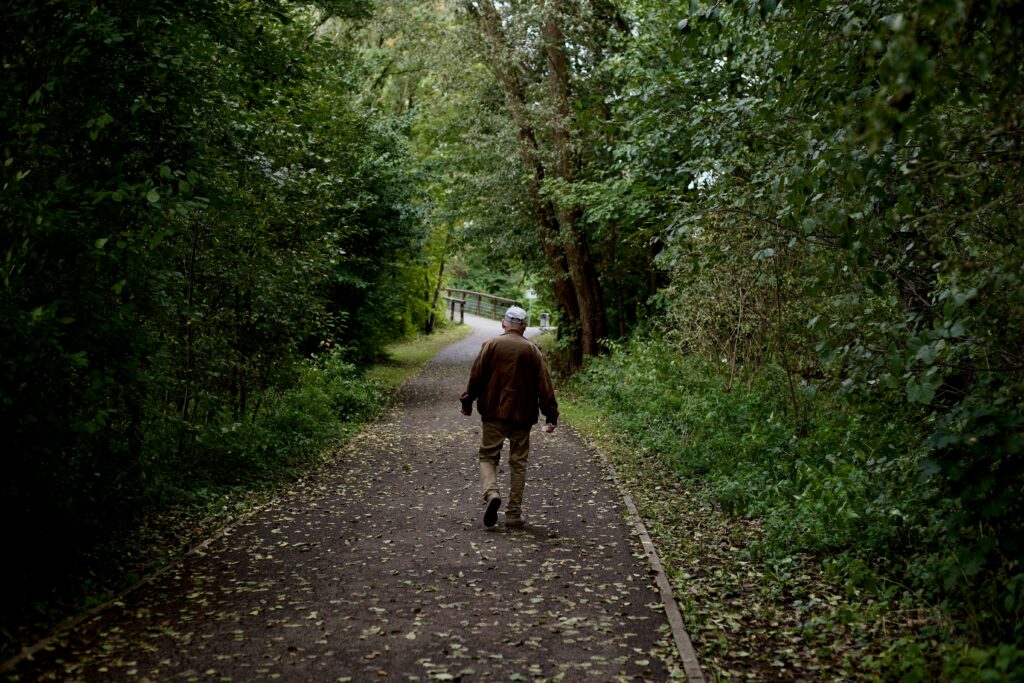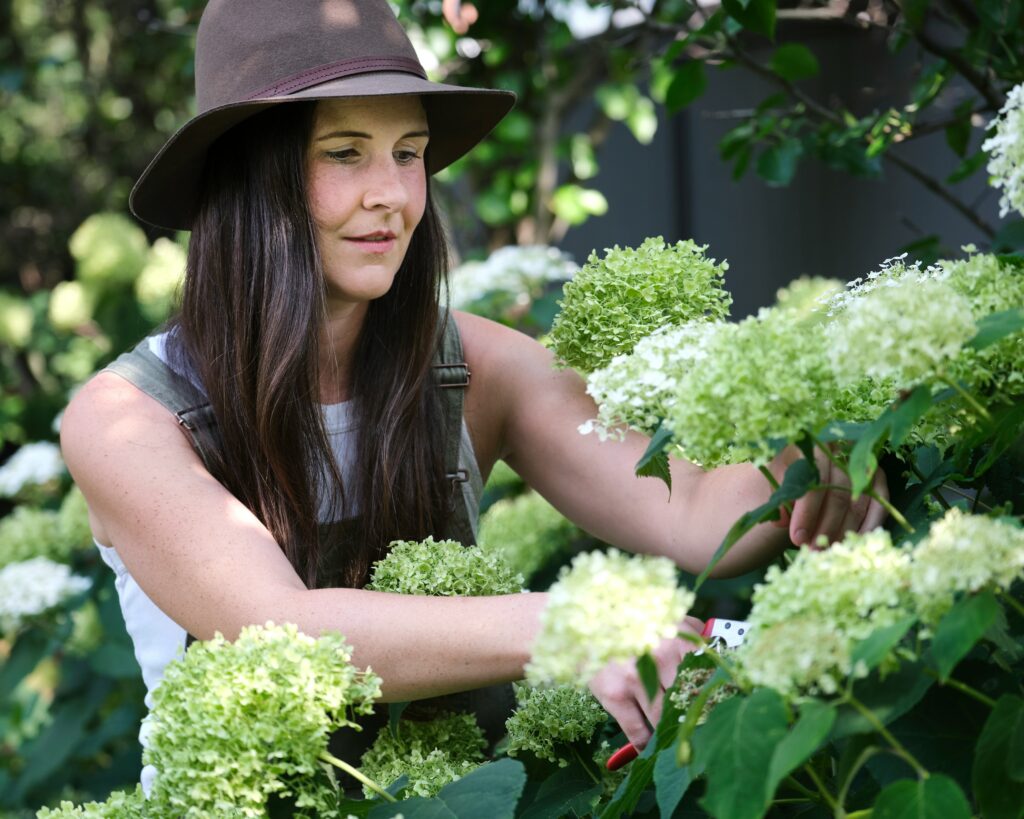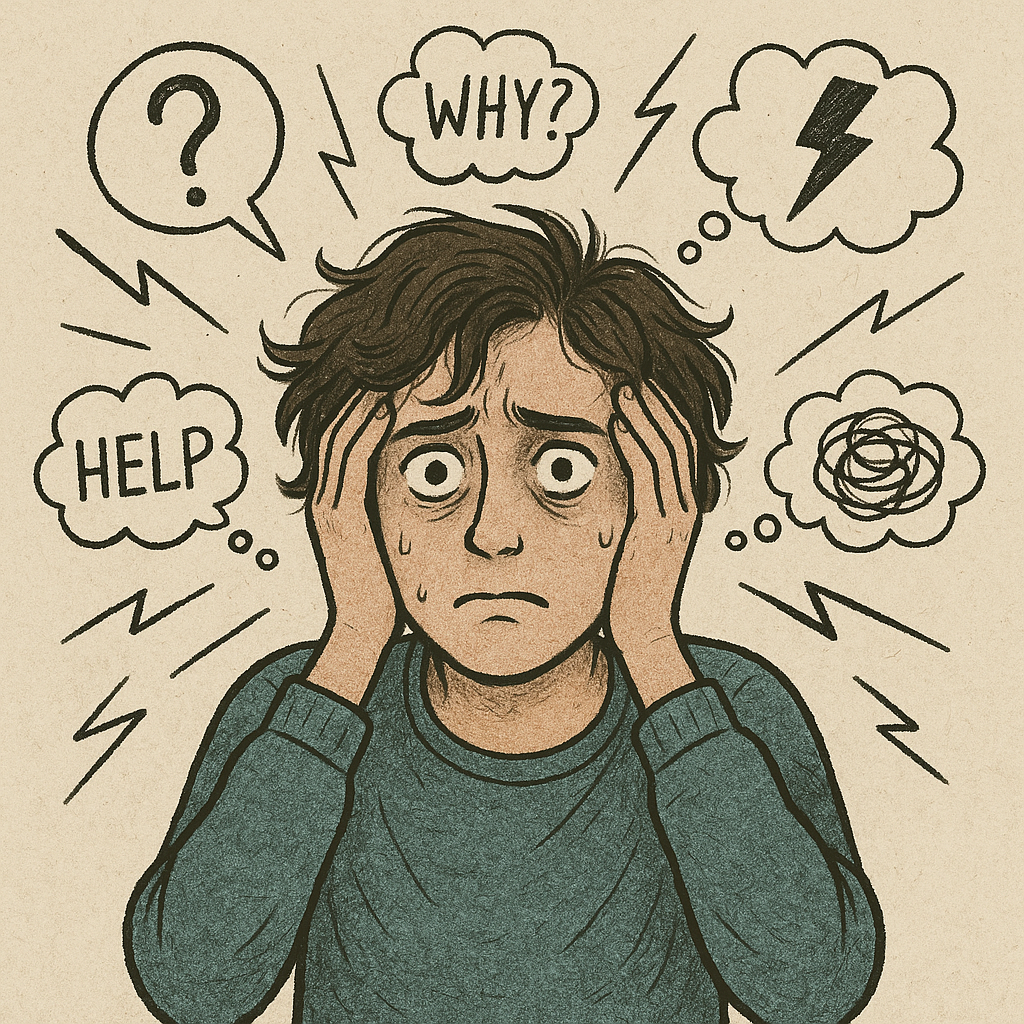Anxiety is part of being human. It is the emotional response to the fight, flight, freeze, or fawn (4 Fs) response. While the 4 Fs are a physiological response to real or perceived danger, anxiety is the emotional response to real or perceived danger. Many are biologically predisposed to different forms of anxiety, but that doesn’t mean you have no control over it. So what if the goal isn’t to erase anxiety, but to live with it and thrive?
The 4 Fs are considered the body’s survival response, and anxiety tries to convince you that you are actually in danger. If you aren’t really in danger but are buying into the anxious thoughts, your amygdala gets hijacked, and you have lost your ability to problem solve. And when anxiety becomes chronic, it can feel like you have no control over your life. Learning how to live with anxiety and thrive means finding ways to reduce its power.
Shift the Goal from Eliminating Anxiety to Managing Anxiety
You don’t have to be anxiety-free to have a good life. I don’t even think that is possible. What I have observed is that trying to never feel anxious often makes things worse. A more helpful mindset is: If I am feeling anxious, how can I feel it without it taking over?
This means noticing when anxiety shows up and learning how to respond with curiosity and self-compassion, instead of buying into it.
Understand Your Anxiety Triggers
Knowing what tends to set off your anxiety can help you prepare and respond more thoughtfully.
Often, there can be biological factors, environmental factors, social factors, and life events that impact anxiety.
Here are some questions to ask yourself:
Have you been getting enough sleep?
Are you eating throughout the day? And for the most part, nutrient-rich foods?
Are you drinking enough water and staying hydrated?
Is the space you live or work in too cluttered, distracting, or overstimulating?
Are you dealing with stressful life events?
Are you surrounding yourself with toxic people?
Are you spending your time taking care of others and not yourself?
All of these things can trigger anxiety. Give yourself the opportunity to be aware of what you aren’t getting enough of or what you are getting too much of. Awareness is the first step to change.
Tools to Manage Your Anxiety
Create Anchors in Your Day

Routines can ground a nervous system that’s always scanning for threats. Even something small, like a morning walk, a favorite cup of tea, or a few minutes of deep breathing, can serve as a daily anchor. It can also give you something to look forward to.
But also, for example, if you aren’t getting enough sleep, creating a sleep routine can make sure you are doing what you need to protect your sleep.
This is also helpful when you are dealing with life’s stressful events. An anchor can give you a break from thinking or dealing with the event because staying in the stressful space physically and/or emotionally will only exacerbate your anxiety.
And don’t just think of these as habits, think of them as protective factors that help manage your anxiety.
Use Your Body as an Ally
Your body is always trying to communicate with you. It is the truth teller if you know how to listen. Unfortunately, your brain can create a story that isn’t true when you experience the physical symptoms of anxiety. For example, you feel your chest tighten, so your brain tells you that you must keep doing what you are doing or something bad will happen.
Think about this for a second… imagine you have a string tied around your chest. The more you keep going, the tighter the string gets. The only way to loosen the string is to stop what you are doing. Your brain tells you to keep going, but your body is telling you to stop.
Using this metaphor in an anxiety-provoking situation would look like… your friend is dealing with a stressful situation by over-caretaking and self-sacrificing. Although you offer support and other suggestions that might be helpful to lighten their load, they are resistant to accepting the help and support. This may cause you anxiety because you love this person and you want to help. You keep trying to help and keep getting met with resistance.
Your brain is telling you to keep trying, but your body is telling you to let go, because at the end of the day, you can’t make someone do something they don’t want to do, even if it is good for them.
If you don’t know how to listen to your body, here are some suggestions:
Use the Box Breathing Technique to slow your mind down.
Scan your body for any sensations.
Using the tight chest as an example, visualize the tightness as a separate energy from yourself.
Ask that energy, “What are you trying to tell me?”
Listen to what “tightness” says. It might say something like, “I want you to stop what you are doing. The only way I know how to communicate this is by constricting your breathing. The more you continue trying to help your friend who doesn’t want the help, the more I constrict. Let it go. When you let it go, I can let the string go.”

Set Boundaries That Protect Your Energy
Many people are uncomfortable setting boundaries, especially people pleasers
Overcommitting, people-pleasing, and saying yes when you mean no all feed anxiety. Learning to say, “That’s not something I can take on right now,” or “Let me think about that,” is a form of self-respect.
So what exactly are boundaries? In Terri Cole’s book, Boundary Boss, she talks about 5 types of boundaries.
- Physical – your body and your personal and physical space
- Sexual – the level of physical or verbal intimacy that is comfortable for you
- Material – whether or not others have your permission to access your stuff
- Mental – you are the only authority of your thoughts, values, and opinions
- Emotional – you are responsible for your own feelings, and not for anyone else’s
If you aren’t setting boundaries, you aren’t protecting your energy. If you aren’t sure what your boundaries are or could be, think about the list of assertive human rights.
Protect your peace like it matters, because it does.

Talk Back to Anxious Thoughts
Your anxious brain is like a smoke detector: it goes off even when you just burned toast. Learn to pause and check the facts.
Ask yourself: Is this true? Is this helpful? What’s another way to see this? Am I thinking in cognitive distortions?
How we think affects how we feel. Taking time to be aware of how we are thinking, what is the story we are telling ourselves, and reality check with curiosity and compassion is a way to reclaim your mental space.
Get Support That Gets You
Whether it’s a therapist, support group, or a friend who really gets it, you don’t have to do this alone. Living with anxiety can feel isolating, but many people experience it. You are not alone.
And connection reminds you that you are having a human experience.
You Can Thrive, Even With Anxiety
Thriving doesn’t mean you never feel anxious again. It means anxiety doesn’t control you or dictate your choices. It means living a life that feels aligned with who you are, even when your mind gets loud.
So take a deep breath. Think about the information in this post, and choose which tip sounds good to you right now. Because you can live with anxiety and thrive.
Jacqueline V Cohen is a Licensed Professional Counselor and ADHD Certified Clinical Services Provider. To learn more about her work, visit her website. You can also contact her by email.



